Objectives
|
Our STRATEGIC RESEARCH PROGRAMME wants to contribute to the deployment of Photovoltaic (PV) Solar Energy, aligning our efforts to the targets that have been established at the international level. The European Strategic Energy Technology (SET) Plan established in its “Declaration on Strategic Targets in the context of an Initiative for Global Leadership in PV” the goal of “Re-build EU technological leadership in the sector by pursuing high-performance PV technologies and their integration in the EU energy system; and bring down the levelized cost of electricity from PV rapidly and in a sustainable manner to allow competition in electricity markets all over Europe”. The research project of our Institute tackles the following four specific scientific objectives: |
||
OBJECTIVE 1: To propose a set of high efficiency PV technologies exploring their technical and economic viability. |
||
| This objective is aligned with Strategic Target 1 “Major advances in efficiency of established technologies and new concepts”, established within the mentioned SET Plan document. As crystalline silicon technology is reaching its efficiency limit, the combination of silicon with other semiconductors in a tandem structure will be one of the fields of research, with original approaches for the integration of III-V semiconductors, thin films or perovskites on silicon, or for connection of the subcells. This is the case of an idea we are exploring with our partners in which an Interdigitated-Back-Contacted Si solar cell is monolithically integrated in parallel with the upper and the bottom subcells, with the potential of achieving 40% efficiency. Concentrator Photovoltaics (CPV), which has demonstrated the highest efficiencies ever reached, will also be tackled, increasing cell and module performance. III-V solar cells with 4 to 6 junctions using different new architectures will be explored, with expected efficiencies of 45-50%. The development of achromatic optics for CPV, an original idea of our Institute, will contribute to increase the angular tolerance of the modules, a key aspect to improve the energy interception factor at the module and system level. Further research on high efficiency concepts such as the intermediate band solar cell or the heterostructure transistor-type solar cell, original ideas from our Institute, will also be pursued. | 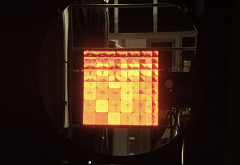 |
|
 |
||
OBJECTIVE 2: Contribute to the reduction of the cost of PV electricity. |
||
| This objective is aligned with Strategic Target 2 “Reduction of the cost of key technologies” of the European SETPlan for PV. We have identified two main lines of research: the reduction of the cost of the systems and the increase of their performance. For the first one we will cover the different steps in the value chain: We will work on the reduction of the cost of the silicon wafer, adopting an integral approach for the implementation of defect engineering solutions, from the feedstock to the solar cell. We will tackle the integration of electronics into the modules, and we will also work on the reduction of installation and operational costs by increasing the voltage of the PV arrays, developing solar trackers not requiring excavation works, and also methods for the automatic detection of performance failures. Regarding the increase of the performance of PV systems, we will work on advanced quality control procedures and cost-effective monitoring systems, and will study in depth the aging and degradation mechanisms in the field towards their minimisation. Also, CPV will be tackled, as its unique conversion efficiencies can be the driver for a significant cost reduction. CPV shows a high potential for cross-fertilization with other massive industries, benefiting from the developments of materials and manufacturing processes carried out, for instance, for the assembly, contacting, end encapsulation of chips in the lighting industry. We will take CPV one step further by comprehensively covering material, device, optics and system issues, with special emphasis in reducing the manufacturing costs of multijunction solar cells, simplifying the optics and component integration in CPV modules and developing methods for the inline characterization of cells and modules. | 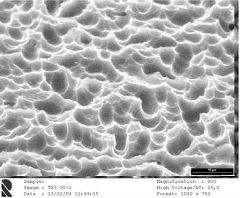 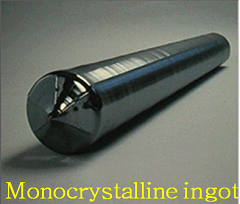 |
|
OBJECTIVE 3: Provide solutions to increase the integration of PV in electrical and energy systems. |
||
|
This objective is aligned with the European Directive now in discussion that wants to reach a 35% share of renewables in the energy system in 2030, as well as with the global objectives of doubling the share of renewable energy and ensuring universal access to modern energy services by 2030 (UN “Sustainable Energy for All” initiative). We will provide solutions that tackle the main problem related with the massive integration of PV systems in the grid, the intermittence of PV power. We will work on energy management and storage control in PV systems: battery integration will allow an active control of key parameters for the electrical networks (voltage in secure margins, no inverse currents), and will also allow the PV systems to contribute to the secondary regulation or to shift the injection of electricity to the hours of higher levels of consumption, allowing the need for backup power to be reduced. We will work on the development of new cheap accumulation technologies like secondary Zn-air batteries and we will produce methods to reduce their size. We will also deepen on the prediction and mitigation of PV power fluctuations, producing methods and tools to reduce them at levels not dangerous for the stability of the grid. We will dedicate efforts to the specificities in the integration of PV in urban environments following the “Smart Grid” paradigm, where “Distributed Energy Resources” are deployed close to the places where electricity is required. A comprehensive approach will be followed, ranging from the identification of the PV potential at building and urban scales to PV systems design, management and generation forecasting. Of particular interest is the concept of “Active Demand Side Management”, in which the combination of PV, storage and energy efficiency actions will allow electricity “prosumers” to actively participate in the provision of electrical services. In addition, we will research on PV solutions that allow opening new market opportunities. In this context, we will work on specific applications such as PV irrigation, PV heating and cooling, hybridization of systems with diesel for off-grid activities (like mining). We will also focus on Zero Energy Buildings, where high efficiency PV technologies may also play a significant role. We will also continue with our research on PV solutions that guarantee basic energy services to the large part of the humanity lacking of them. |
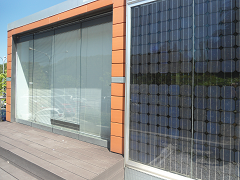 |
|
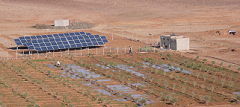 |
||
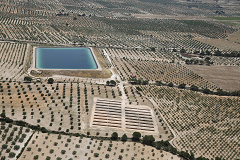 |
||
OBJECTIVE 4: Develop PV cells and modules for space applications |
||
| Application for powering space satellites was at the heart of PV development and, actually, preceded terrestrial applications. We think that today we have the opportunity of applying back to space what we have learnt in decades of experience on Earth. In this respect, space application can, on one hand, serve for the initial commercialization of the most advanced solar cells our Institute is developing in OBJECTIVE 1, benchmarking their performance with the end-of-life efficiency (EOL) goals established by the most relevant Space Agencies. On the other hand, our expertise in efficient module design, solar cell degradation and intelligent use of the energy can also benefit the space industry. Intelligent use of energy can, for example, reduce the number of solar cells demanded for a given power especially if the design is well correlated with degradation effects. The development of this objective is therefore aligned with the H2020 Programme and, more specifically, with the SPACE-11-TEC-2018: Generic Space Technologies Call that pursues to develop critical space technologies for the European strategic non-dependence programme. | 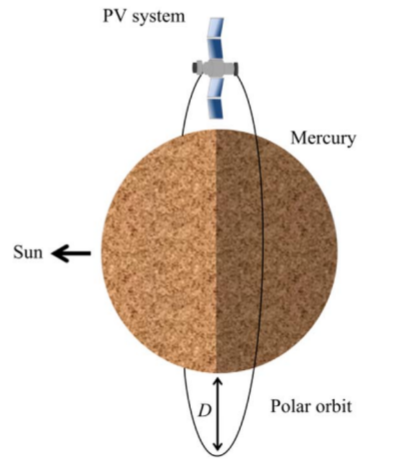 |
|


